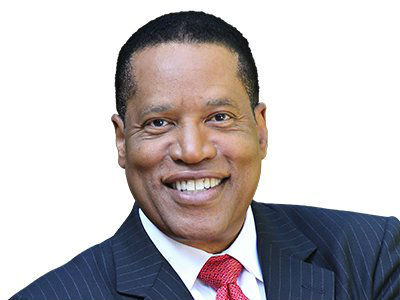Evolving phone habits: What we’ve lost and what we’re bringing back
Lifestyle

Audio By Carbonatix
2:00 PM on Monday, November 3
By Jeff Clemishaw for Spokeo, Stacker
Evolving phone habits: What we’ve lost and what we’re bringing back
The first telephone received its patent in 1876 and was constructed just two years later by Alexander Graham Bell. Ever since that moment, the way society interacts with one another has been forever changed.
Over the past 150 years, telephone technology and the way people use it have evolved dramatically. Many former habits are lost to time, and many new ones are emerging. In this article, Spokeo highlights some of the most interesting trends that have faded out, as well as some that have gained newfound popularity.
1. No more memorization
There was a point in time when memorizing important phone numbers was essential, as people didn’t carry their contact books with them everywhere. The seven-digit system for phone numbers was even developed with memory in mind. Psychologist George Miller found in 1956 that seven was the magic number that most people could easily recall.
Today, all contact information is saved directly on the phones people use and carry. There’s really no need to memorize anymore. According to a study by whistleOut, only 7.15% of people aged 18 to 24 have two to five phone numbers memorized, compared to 17.2% of people aged 55 to 85. This study was conducted with 425 Americans aged 16 years or older with an error margin of +/- 5%. Results of the survey were weighted to match Census data.
If you ever get a call or text from a number you don’t recognize, a reverse phone lookup can help you identify who’s reaching out and decide whether it’s someone you know or a call you can safely ignore.
2. 411? What’s that?
Before the internet, there were only a few methods to look up public phone numbers. The Yellow Pages were found in every household across America, providing people with an easy way to find the phone numbers of businesses and friends.
411 goes back even further. It was a dial directory that anyone could call to speak to an operator and find a number they were looking for. However, it has since faded out as smartphones came into production and people got direct access to business information with a few taps. In 2023, AT&T discontinued the service completely.
3. Landlines are making a comeback, but not how you think
With smartphones in the pockets of everyone around the globe, landlines have largely died out. According to data from the National Center for Health Statistics, 71.7% of Americans rely solely on wireless cellphones. Methodology included surveying adults 18 years or older and is up-to-date as of 2022.
Still, landlines have a place, and they’re making a comeback in certain ways. Many businesses still utilize landline phones and CNET suggests that it could be useful to hold onto corded phones in the case of a widespread service outage. Aesthetically, HouseBeautiful reports that Gen Zs are even adopting landlines as the “next nostalgia design trend,” and putting them up in their homes.
4. Business card scanning
When you used to want to exchange contact information with a person, you’d write their number down, or you’d collect their business card. Today, people are opting to scan business cards and store them on their phones instead. There are many apps available that will do this quickly.
5. Avoiding calls with voice notes
A study by Uswitch found that 23% of people aged 18 to 34 never answer the phone, citing reasons like being wary of spam, being too busy, and not wanting to be interrupted. This study was conducted by asking 2,000 U.K. residents a series of agree/disagree statements.
Many people are texting voice notes in place of calls. Rather than dialing up a person, you can simply speak into your phone and send it as a message. Preply found in 2024 that the majority of survey respondents use voice notes. Their methodology included surveying 1,000 individuals aged 18 to 76. Respondents were 48% female, 50% male, and 2% nonbinary.
6. The rebirth of the flip phone
Flip phones were one of the first small, mobile phones that people used. They were replaced by phones with better user interfaces, such as texting phones, slider phones, and eventually smartphones.
Surprisingly, flip phones are on their way back. The Partners Universal Innovative Research Publication found that “brick phone” sales are on the rise with Gen Z consumers. From 2021 to 2024, sales increased 148% among people aged 18 to 24.
7. Phone etiquette in the modern era
Our behavioral expectations of others when it comes to phones have changed as well. According to the American Association for Physician Leadership, here are some of the new modern rules for phone usage:
- Forget about leaving voicemails.
- Send a text before calling.
- Don’t call someone again if they didn’t pick up.
- Don’t use your speakerphone when in public.
8. Phone booth installations
Phone booths are on the comeback too, but with a modern twist. Many offices and coworking spaces are starting to install them as a way to facilitate conversations without distraction. Groupe Focus says that these types of installations can improve privacy and focus.
Some homeowners are even choosing to add a phone booth to their home to create nostalgia.
Staying up to date with phone trends
Technology is moving faster than ever, and phones are no different. Besides the technical advances that are made, people also need to consider the social trends that evolve with them.
Many phone trends that were once commonplace have already ended, and new ones are arising on a yearly basis. What’s normal to today’s generations may be outright bizarre and impractical to future ones. Who knows what might come next? And if you find yourself reminiscing about past conversations or friends you’ve lost touch with, a people search can help you reconnect.
This story was produced by Spokeo and reviewed and distributed by Stacker.

























